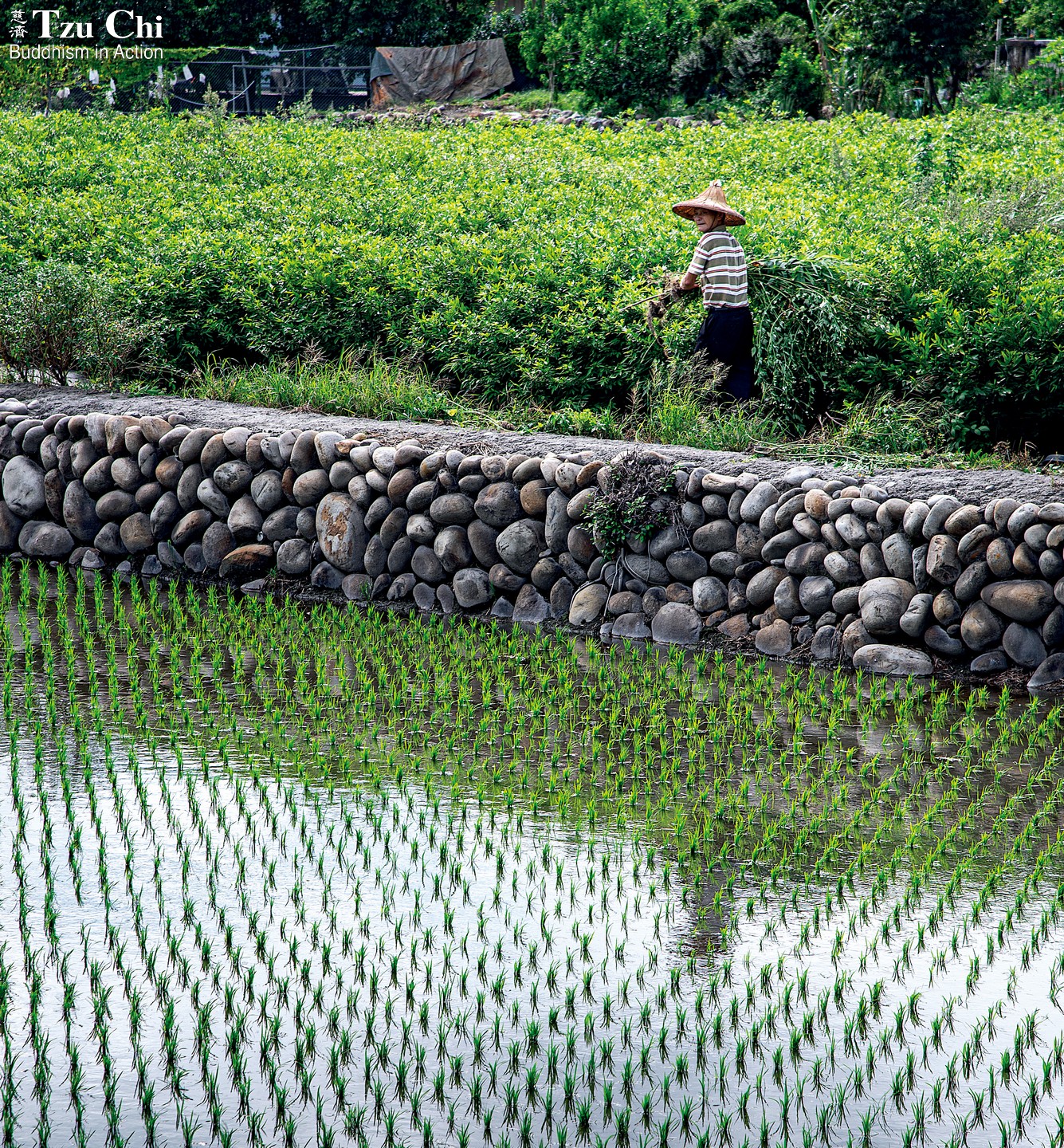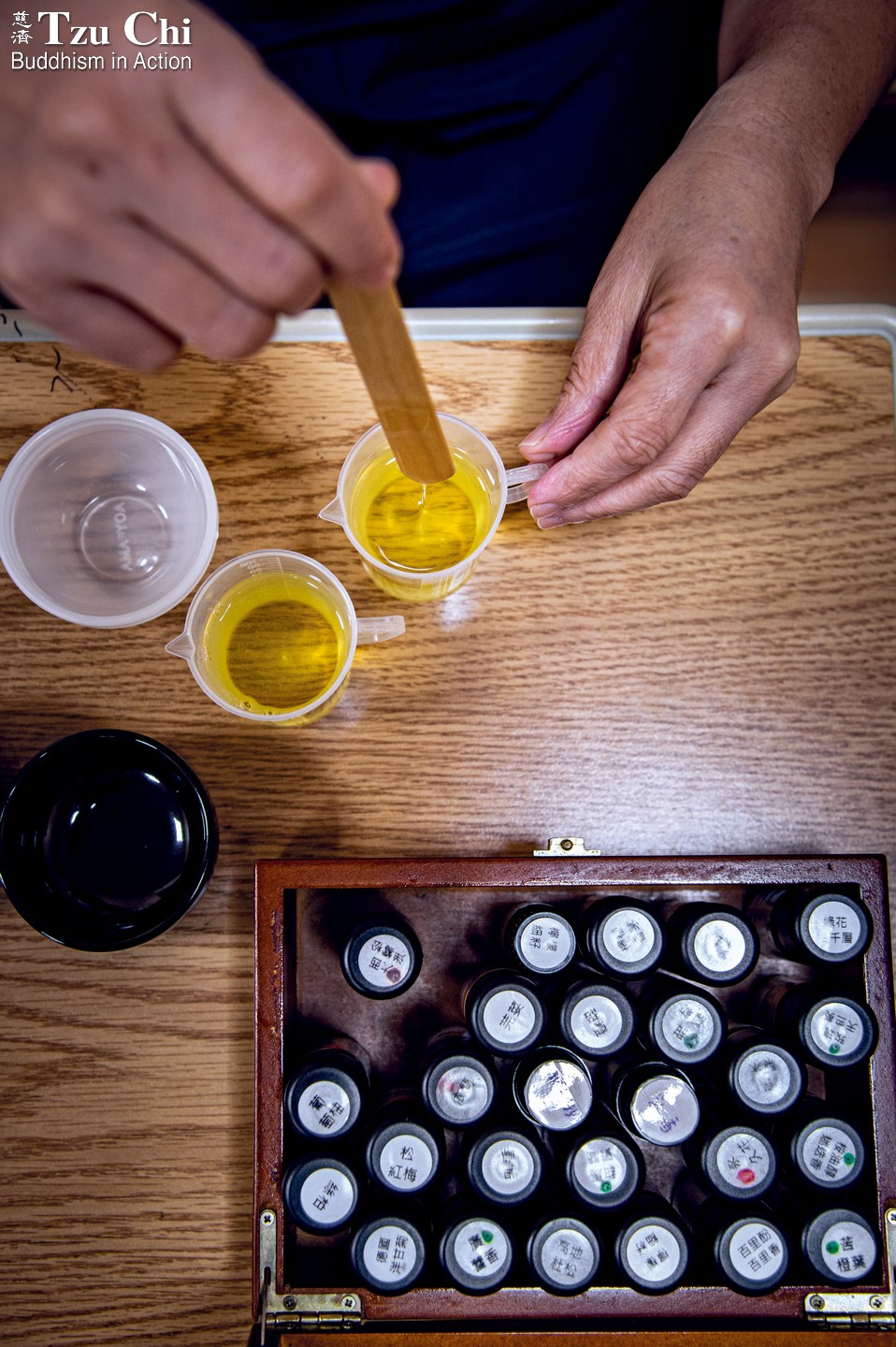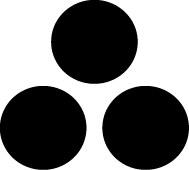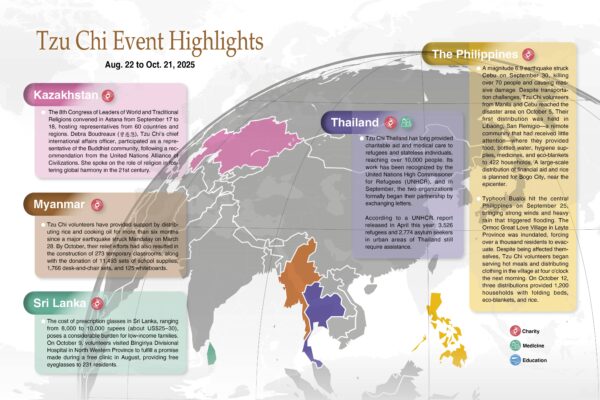By Hong Jing-jing
Translated by Wu Hsiao-ting
Photos by Huang Xiao-zhe
The Earth’s vegetation nourishes our bodies as food, but its therapeutic properties can keep us healthy in other ways too.
Around 60 Tzu Chi volunteers formed neat rows, their hands clasped in reverence, facing a lush herbal garden in Shengang, Taichung, central Taiwan. Volunteer Zhang Shu-juan (張淑娟) spoke on behalf of the group, addressing the plants in the garden: “Dear herbs, we’re here today to harvest you. We’re very grateful for your abundance, which will allow us to have a bountiful harvest. This harvest is meant to save people. We hope you unleash your utmost goodness.”
During the COVID-19 pandemic, in an effort to help the world combat the infection, Dharma Master Cheng Yen instructed Tzu Chi healthcare professionals to develop a health drink based on the wisdom of traditional Chinese medicine. A collaborative team made up of traditional Chinese and Western medicine specialists was subsequently formed at Hualien Tzu Chi Hospital in eastern Taiwan. By harnessing the potential of eight herbal plants, they successfully formulated an anti-coronavirus health drink, which they introduced as Jing Si Herbal Tea in December 2020.
After the product had been developed, the Tzu Chi Foundation sent it, along with other COVID-19 aid, to over 40 countries and regions. In the midst of these efforts, however, the supply of the herbs essential for making the tea ran short. Tzu Chi volunteers around Taiwan promptly mobilized and began cultivating the required herbs, including Chinese mugwort, Desmodium caudatum, and perilla, to contribute to the fight against the pandemic.
Zhang Shu-juan recalled that Tzu Chi volunteers in Taichung managed to collect 50,000 Desmodium caudatum seeds within a week in February 2021. From these seeds, they successfully cultivated 20,000 plants using natural farming techniques on land generously provided by two landowners in Shengang. “Previously, we only knew of this herb’s folklore reputation for warding off negative energies or being used in purification baths,” she said. “Now that we understand its potential to save lives, our hearts are filled with even more reverence for it!”
“The herbs cultivated by our volunteers grow up amidst the chants of the Buddha’s name, the recitation of the Heart Sutra, and aphorisms from Master Cheng Yen,” said Lin Zong-min (林宗民), another volunteer, expressing the care that he and his fellow volunteers have for the plants. “We believe that plants can sense, so when we work in the fields, we ask the herbs, ‘Are you comfortable here? Are you thirsty?’”
A volunteer works in a herbal garden planted with Desmodium caudatum, one of the ingredients of Jing Si Herbal Tea. The garden is located in Shengang, central Taiwan.

Medicinal benefits of Chinese herbs
“Chinese medicinal herbs have the ability to regulate the immune system and inhibit acute inflammation in the body,” said Superintendent Yeh Chia-chou, of Sanyi Tzu Chi Chinese Medicine Hospital in northern Taiwan. He explained that although the effects of Chinese herbal medications may not be as rapid or potent as chemically synthesized Western medicines, which often focus on a single target, the herbal medications are composed of natural small-molecule compounds and operate with a multi-organ and multi-target approach. This enables them to effectively moderate acute inflammation, thus preventing the harmful consequences of an “immune storm.”
Yeh mentioned that the inspiration Master Cheng Yen drew from the traditional uses of Chinese mugwort and Desmodium caudatum for purification and disease prevention significantly contributed to the research at Hualien Tzu Chi Hospital for developing Jing Si Herbal Tea. Similar research and applications have also been explored with various other Chinese medicinal herbs in the medical field.
Yeh cited the example of honeysuckle, a commonly used Chinese medicinal herb easily found in low-altitude areas and plains of Taiwan. This plant is often employed in traditional Chinese medicine to alleviate heat and detoxify the body. Yeh has studied the herb for over 15 years. He explained that it can stimulate the body to produce interleukin-10, an anti-inflammatory cytokine. It can also generate microRNA2911, which operates within the human body by binding to the RNA of the novel coronavirus, enterovirus, and rotavirus, thereby impeding their extensive replication and the onset of disease.
Another example is sweet wormwood (Artemisia annua). Chinese pharmaceutical chemist Tu Youyou (屠嗷嗷), a 2015 Nobel Prize laureate in physiology or medicine, highlighted artemisinin, derived from sweet wormwood, as a gift from traditional Chinese medicine to the global medical community. Malaria has remained a significant infectious disease from ancient times to the present day. During her research to combat this disease, Tu Youyou discovered references to the anti-malarial properties of sweet wormwood in an ancient Chinese medical text from the Jin Dynasty (266 to 420 CE). This discovery led to the isolation of artemisinin from sweet wormwood, revolutionizing the treatment of malaria. Artemisinin is readily accessible and has saved countless lives in poor countries.
The concept that “food and medicine are from the same source” has been around since ancient times in China, so it’s no surprise that some medicinal herbs also serve as culinary ingredients. Yeh Chia-chou provided the example of lily, a commonly used Chinese medicinal herb often incorporated into dishes. It can aid in promoting sleep when there is dryness in the respiratory tract and restlessness of the mind. Another example is Gastrodia elata, employed to treat dizziness, enhance blood circulation in the brain, and improve symptoms of depression. It is also suitable for preparation as a soup. Yellow chrysanthemum can clear heat from the stomach, while white chrysanthemum can dispel lung heat. Both can be brewed as tea.
From the standpoint of traditional Chinese medicine, illness signifies a battle between the body’s righteous qi and pathogenic factors. When external pathogens invade, the primary aim is not to eradicate the pathogens through medication but to bolster the body’s righteous qi, thus establishing an environment unfavorable to pathogen growth. Both Western immunology and traditional Chinese medicine underscore the importance of prevention.
Yeh offers a piece of advice regarding the use of patented Chinese herbal medicines, which are ready-made products typically in the form of pills, tablets, or powders. He emphasizes that these patented formulations are medicines and cautions against their prolonged use. He recommends that if extended usage is necessary, it should be done only under the supervision of medical professionals.
Herbal or medicinal plants have diverse applications, ranging from tea and cooking to essential oil massages and more. They can be used not only for their healing potential but also to enhance overall health.

Nature offers an abundance of cures
While traditional Chinese medicine has a rich history in the East, “today’s Western European and American countries have also developed their own herbal medicine, which shares similarities with traditional Chinese medicine,” said Erica Kuo (郭姿均). She is a licensed aromatherapist in both the United Kingdom and the United States, as well as a registered clinical herbalist in the United States. She explained that Saint John’s Wort, a perennial plant, was recognized as early as Greek and Roman times for its ability to alleviate tension and anxiety, while lavender was used in baths to help soothe and relax the body. Archaeological experts have also uncovered ancient Egyptian herbal formulations.
“Excluding surgical procedures and dental extractions,” Kuo added, “many forms of physical discomfort can be alleviated using herbal or medicinal plants.” She pointed out that access to medical treatment in Taiwan is convenient and affordable, which has led to a heavy reliance on Western medicine. Conversely, people in the United States, who must contend with high healthcare costs, have tended to focus on preventive medicine and self-healing. Integrating herbs with healing properties into daily health practices can reduce unnecessary medicinal usage and minimize the risk of drug allergies, aligning with this shift toward self-care and prevention.
Different herbal or medical plants possess varying natural healing powers. Kuo offers a few examples: dandelion can reduce swelling, purify the blood, and enhance liver and kidney detoxification. Elderberry effectively alleviates cold symptoms, while the well-known ornamental garden plant, echinacea, also known as purple coneflowers, is renowned for its immunity boosting qualities. During the COVID-19 pandemic, many turned to echinacea as a dietary supplement to strengthen their immune systems. Kuo explains that it contains alkylamides, which can bind to and activate CB2 receptors on immune system cells. However, alkylamides cannot be extracted through distillation, so the most effective way to harness the benefits of echinacea is by infusing it to create a herbal essence or boiling it to create a concentrated tea.
Western herbal medicine also follows principles of seasonal health. “We can enhance the health and vitality of our organs by aligning our diets with the changing seasons,” Kuo said. She underscores the significance of detoxification in spring, nurturing the liver, and suggests incorporating young dandelion leaves into salads. In summer, the focus shifts to energy replenishment, heart health, and immune system enhancement. She recommends consuming red-colored foods, like hibiscus and rosehips, during this time. Lung health and respiratory well-being are emphasized in autumn, with lemon balm being a representative plant known to boost immunity and prevent flu. In winter, the attention turns to nourishing the kidneys and supporting the endocrine system; nettle leaves, beneficial for kidney health, can be used to prepare soup.
Kuo provides a crucial reminder: essential oils and herbal remedies are complementary therapies. They should be customized by professional herbalists, using certified herbs, to align with individual needs and constitutions. For instance, Chinese mugwort is generally harmless when used in small quantities in food or as a herbal remedy. However, since it can promote menstruation, it should be avoided by pregnant women and individuals with uterine fibroids. Moreover, highly concentrated Chinese mugwort extract, such as in the form of an essential oil, can trigger adverse reactions, including cramps and tremors, in patients with Parkinson’s disease, epilepsy, or a history of brain injuries. As a result, it should not be used on people with these medical conditions.
The Earth abounds with vibrant flora. By learning about and utilizing the power of such gifts from nature, we can help our bodies prevent illness in a more natural way or recover more effectively when we become unwell.



